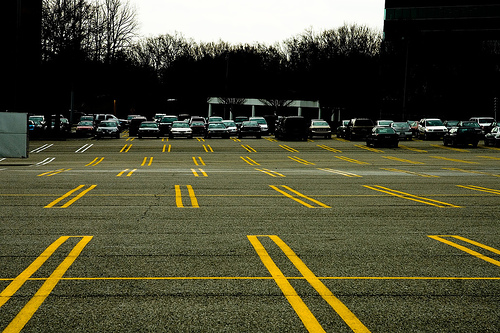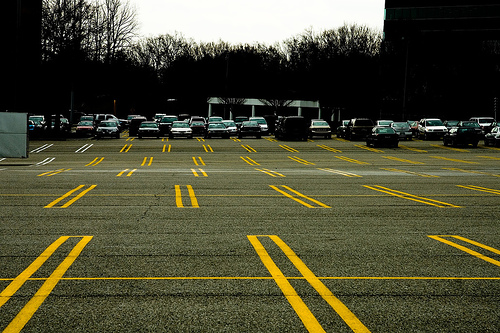 Photo: jgrimm FlickrNobody loves a parking lot, its endless heat-trapping concrete where visitors wander for what feels like eons, searching for their car. At least, nobody loved them until recently. Suddenly, greyfields–underutilized squares of asphalt–seem like goldmines. (Okay, this happens to be the title of a book on the subject, though it covers dead malls more than parking lots).
Photo: jgrimm FlickrNobody loves a parking lot, its endless heat-trapping concrete where visitors wander for what feels like eons, searching for their car. At least, nobody loved them until recently. Suddenly, greyfields–underutilized squares of asphalt–seem like goldmines. (Okay, this happens to be the title of a book on the subject, though it covers dead malls more than parking lots).
In municipalities across the country, parking lots are getting reincarnated as everything from outdoor food markets to condos. But those are individual projects. In Long Island–itself a region so caked with traffic that people refer to its central highway, the Long Island Expressway, as one long parking lot–an ambitious plan to convince developers to infill thousands of acres of parking lots is underway.
The Long Island Index, an advisory group that gathers information about local problems, and suggests ways to solve them, has decided that already dense, trafficky, overpriced and overbuilt Long Island has as its most untapped resource the parking lot. In their 2010 report, “Places to Grow,” the LII has charted specifically where houses and shops could replace lots that stand simply as temporary housing for cars.
They found that “there is enormous potential for development and growth in existing downtown and railroad station areas — roughly 8,300 acres of unbuilt land in over 150 village downtowns and rail station areas.” In other words, why drive to the train station, or downtown, when you can live there? And, in theory, if you already live close to transit and commerce, then you need fewer cars, thus fewer parking spots. And with fewer cars, less congestion, less pollution … you know the drill.
One interesting note is that this effort aims to promote infill development, increased density, and yet maintain the suburban character of Long Island. “The region must find a way to achieve this balance,” asserted LII spokesperson Nancy Douzinas.
The trick, perhaps, is to build housing, but not too much, too fast. As they note, there are about 90,000 acres of greenfield — totally undeveloped land — left on the island. Traditional suburban development would add 90,000 new homes atop it. Instead, they could fit 90,000 units of housing on less than 5,000 acres if they were townhouses, small apartment buildings and the like.
The LII provided this interactive map to help developers — the potential heroes in this scheme — envision where their projects could rise.
The sooner the better, in Long Island and elsewhere, growth waits for no strategic plan; we don’t have unlimited time to unpave parking lots and put up paradise.


